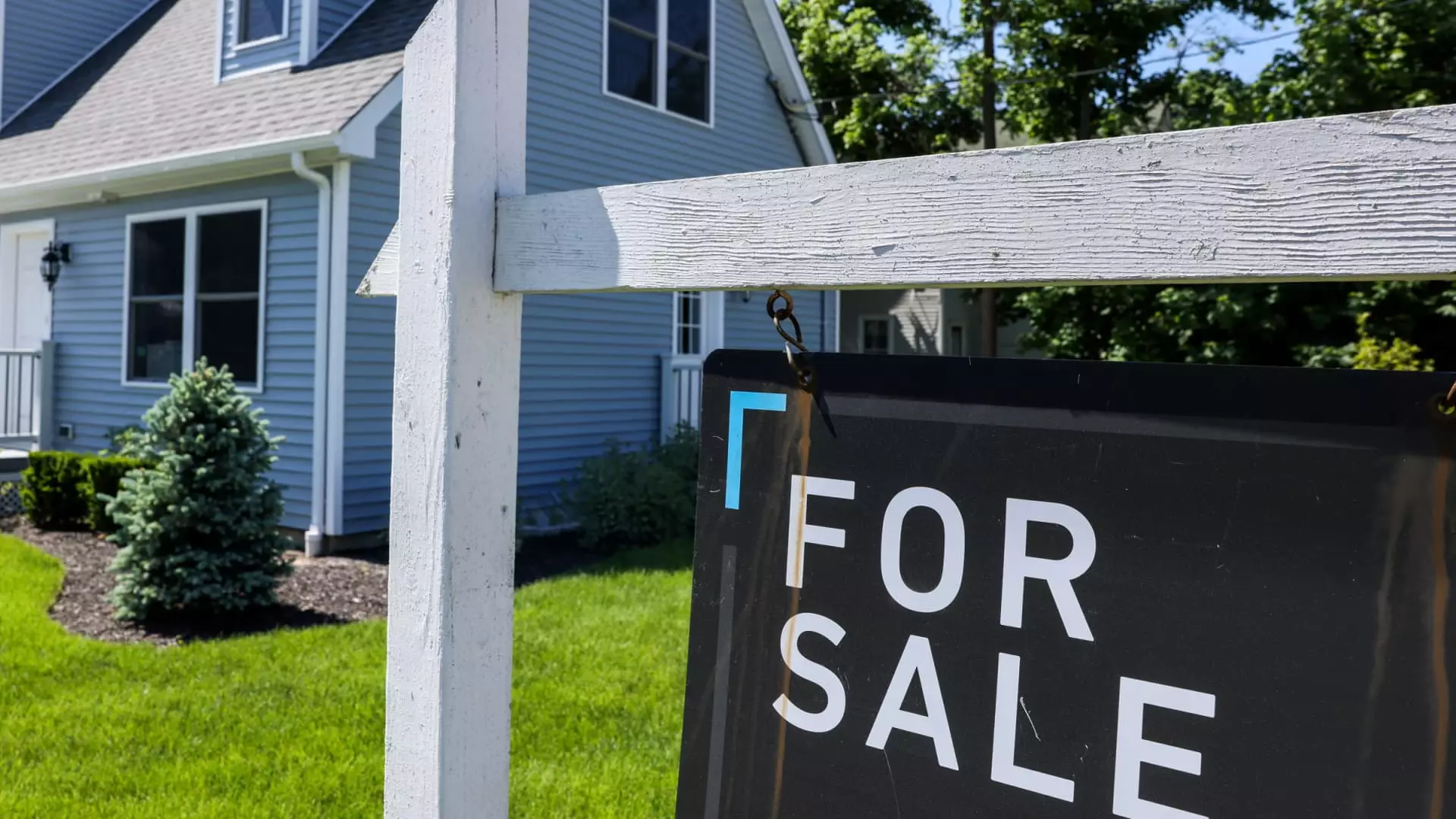In a subtle yet noticeable shift, mortgage rates have experienced a slight decline over the past week, creating a ripple effect in the refinancing landscape. Reports from the Mortgage Bankers Association indicate that refinance applications surged by an impressive 10% compared to the previous week and showed a striking 33% increase from the same week last year. This uptick in refinancing interest signals a responsive market—one where homeowners are keen to act when even minor fluctuations in rates occur.
The average interest rate for a 30-year fixed-rate mortgage with conforming balances has dipped marginally from 6.97% to 6.95%, while points associated with these loans remained stable. These nuanced adjustments reflect the broader economic climate and the opportunistic behavior of consumers eager to capitalize on lower rates. Joel Kan, vice president at MBA, noted that the current refinancing activity has reached the highest level since October 2024, a testament to the growing responsiveness among borrowers to slight movements in mortgage rates.
As interest rates hover around 6% to 7%, it is estimated that about 17% of homeowners currently with a mortgage hold interest rates at or above 6%—the most significant proportion seen since 2016. With these conditions prevailing, many homeowners are weighing the potential benefits of refinancing, albeit with caution. The intense focus on refinancing is compounded by the reality that despite the percentage rises in refinancing applications, they stem from historically low volumes.
As homeowners consider refinancing options, it’s critical to assess not only the rates but also the associated costs. While the allure of lower monthly payments is enticing, the overall cost of refinancing must be weighed against potential savings. Higher rates and additional costs have significantly limited the pool of homeowners who can genuinely benefit from refinancing, indicating a market exhibiting both opportunity and restraint.
In stark contrast to the rise in refinancing applications, the demand for new mortgages to purchase homes continues to wane. Recent data shows a 2% decline in purchase applications week over week, although the figure remains 2% above the same point last year. The current real estate market is characterized by high prices and reduced inventory, creating challenges for potential buyers. Many are compelled to navigate a market that increasingly favors higher-end properties, with the average loan amount for purchase applications reaching an all-time high of $456,100—reflective of changing buyer preferences and financing options.
As prospective homebuyers face daunting prices, the relative stability of FHA loans appears to be under pressure as evidenced by reduced applications, whereas VA loans seem to take a more favorable position in current financing scenarios.
Looking ahead, the market anticipates critical inflation data to be released that could further define the trajectory of mortgage rates. Insights from Mortgage News Daily suggest apprehension surrounding early-year inflation forecasts, emphasizing the complexity inherent in predicting inflationary trends.
As markets seek clarity on whether inflation stays stalled or begins trending towards the 2% target, potential fluctuations in mortgage rates may also emerge, compounding the existing uncertainty in the housing market. The confluence of rising refinance applications and stagnant purchase demand paints a multifaceted picture of the mortgage landscape, with ongoing developments expected to shape homeowner strategies in the coming weeks and months.

